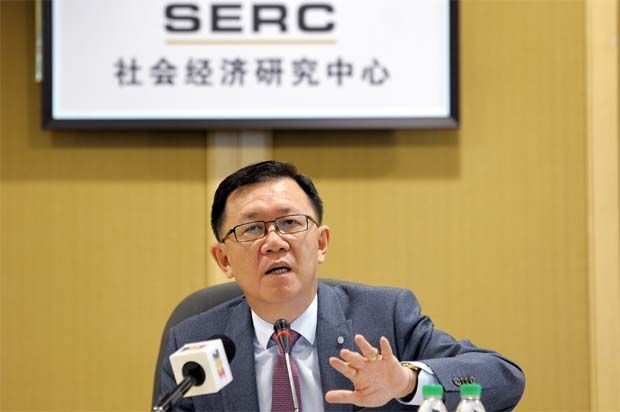
CHINA has officially applied to join the Comprehensive and Progressive Agreement for Trans-Pacific Partnership (CPTPP), which currently has 11 countries: Australia, Brunei, Canada, Chile, Japan, Malaysia, Mexico, New Zealand, Peru, Singapore and Vietnam.
As of 2019, the 11 member countries have a combined population of 508 million (6.6% of the world’s population), generated a gross domestic product (GDP) of US$11.2 trillion (RM46.8 trillion) which is 12.8% of world GDP and accounted for 14.8% of total world trade.
This year, the United Kingdom and Taiwan have applied to join the CPTPP.
If China’s accession to the CPTPP is accepted, what does it mean to the world’s trade landscape?
China’s accession to Asia-Pacific’s Economic Cooperation’s dominant CPTPP together with the Regional Comprehensive Economic Cooperation (RCEP) will reconfigure the Asia-Pacific’s trade landscape, and bolster China’s clout in the world’s trade post the Covid-19 pandemic recovery, as well as to counter balance the influences of the United States.
The inclusion of China in CPTPP will enlarge the 11 members’ CPTPP’s population (consumers’ market) by an additional 1.4 billion, GDP by an extra US$11.5 trillion (RM48 trillion) and US$4.6 trillion (RM19 trillion) in trade.
While the world is witnessing the rise of protectionism, unilateralism and bullying practices, China’s application to join the CPTPP underscores its commitment of freer trade, services and investment liberalisation and it is ready to take up much stricter and higher standard of rules as well as market disciplines under the CPTPP – a gold standard and high-quality Free Trade Agreement (FTA).
There are several sticking points in the CPTPP, which requires China committing to high standards of the agreement clauses and making bigger steps in domestic reforms.
This includes the prohibition of state subsidies for State-Owned Enterprises (SOE), Investor–State Dispute Settlement Mechanism (ISDS), Intellectual Property Rights (IPR) over biological products, labour conditions for government procurement, data free flows and localisation restriction and digital trade.
Malaysia is one of the three countries, together with Peru and Brunei, that has yet to ratify the CPTPP since it was signed in 2018.
Four years have passed, but the government is still in the process of ratifying the CPTPP as the clauses are “complex and comprehensive”.
As Malaysia remains a signatory country, the country does not enjoy preferential tariff rates offered in the agreement and cannot block any consensus made by all the parties involved. Malaysia’s main controversies surrounding the CPTPP are as follows:
> There is much concern that ISDS provision will undermine national judicial sovereignty, raising fears that the government is at a disadvantage to safeguard against frivolous claims by investors.
This valid argument is misplaced as there are mechanisms to ensure appropriate conduct and transparency of the arbitration procedures; and the provisions on mandatory consultation and mediation before a suit can be launched.
It is harder for a foreign investor to invoke a lawsuit under the ISDS against any host government without exhausting various procedures under the CPTPP.
> The public were concerned that the strengthened IPR will raise the prices of medicines.
The counter argument is that CPTPP does not affect Malaysia’s right to negotiate best prices for medicines.
The CPTPP allows the parties to adopt necessary measures to protect public health.
Pharmaceutical prices in Malaysia are not only determined by IPR alone but also other factors at play such as procurement policies, which create monopolies.
> Affirmative action and the bumiputra agenda; the role of government-linked companies; government procurement and small and medium enterprises (SMEs) are also areas of concern.
Malaysia has assured that there are specific carve-outs and side letters that will allow it to sufficiently retain its policy freedom.
The Ministry of International Trade and Industry had successfully negotiated significant carve outs for government procurement.
For example, the agreed threshold for government construction contracts is RM315mil, which means foreign contractors are not able to tender for jobs below those levels.
The 11 CPTPP countries accounted for 29% of Malaysia’s total exports and 24.4% of total imports in 2020.
They accounted for 26.6% of Malaysia’s electronics and electrical products (E&E) exports.
The ratification of both RCEP and CPTPP can support Malaysia’s post Covid-19 economic recovery.
The CPTPP can offer the conventional FTA benefits of access to new markets, tariff concessions and streamlining of customs rules and procedures.
Of course, opportunities come with competitive pressures and challenges for some sectors and businesses, especially SMEs to sharpen their competitive edge in cost, product and market development.
With seven of the 11 CPTPP members – including Japan and Australia as intersection economies also belonging to the RCEP – Malaysia will gain access to new markets such as Canada, Mexico and Peru (1.3% of total exports and 1.0% of total external trade in 2020).
For instance, tariffs for E&E products will reduce from current 0.81% - 2.29% based on the tariff elimination schedule for respective countries namely, Canada, Peru and Mexico.
Malaysia’s commitment in adopting the high standards of CPTPP, investor protection and intellectual property provisions under the CPTPP will increase its attractiveness as an investment destination for companies and investors looking to diversify their supply chains, opening up market access for goods and services as well as digital products.
Lee Heng Guie is Socio-Economic Research Centre director. The views expressed here are the writer’s own.
Source: https://www.thestar.com.my/business/business-news/2021/10/06/insight---malaysia-and-cptpp---better-late-than-never

